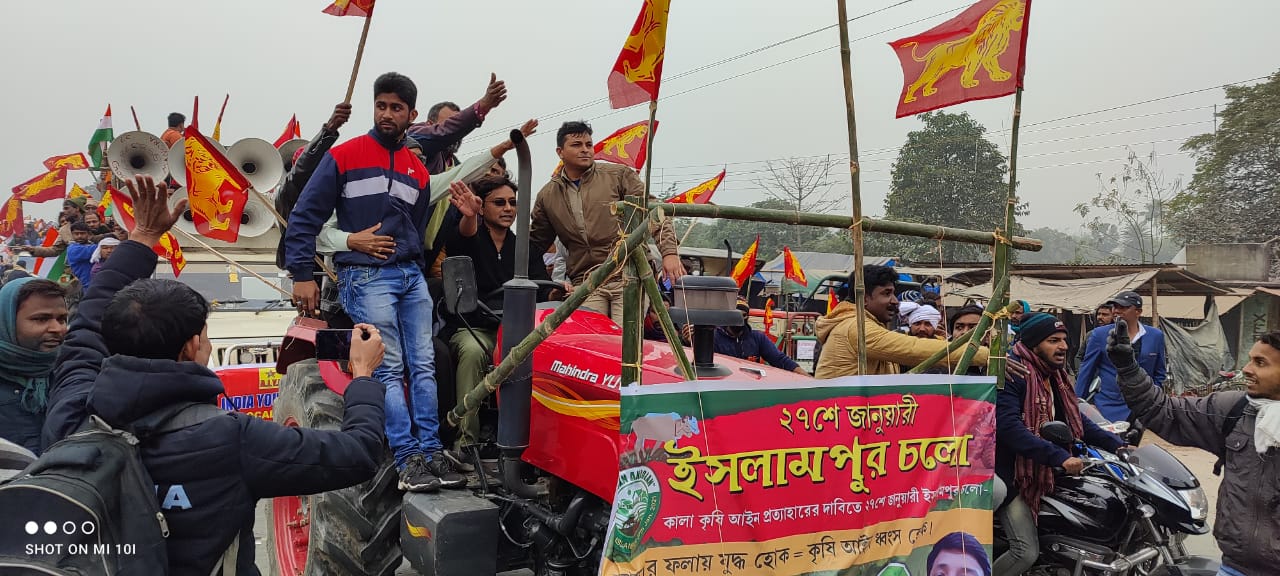
Huge rallies against farm laws give hope to Left parties in West Bengal
Forward Bloc legislator Ali Imran Ramz was pleasantly surprised when the procession his party took out in protest against the three contentious farm laws ended covering a distance of about 45 kilometres on the afternoon of January 27.

Forward Bloc legislator Ali Imran Ramz was pleasantly surprised when the procession his party took out in protest against the three contentious farm laws ended covering a distance of about 45 kilometres on the afternoon of January 27.
In the march from Kanki to Islampur in North Dinajpur district, Around 2,000 tractors and 60,000 farmers took part, surpassing the expectation of Ramz, the MLA from Chakulia.
“Given the response anti-farm laws protests organised by the Left parties and organisations had been getting in the district, I was hopeful of a good turnout. But frankly I too did not expect the turnout would be so huge,” said Ramz.
In this Muslim-dominated district bordering Seemanchal region of Bihar, the Left has been in gradual decline after the Trinamool Congress came to power in 2011.
Historically, the district had been an epicentre of several farmer-centric communist uprisings be it Tebhaga movement demanding two-third of the produce for sharecroppers or Naxalbari movement.

But that was a distant past. Of the district’s nine assembly seats, in 2016 the Left could manage to win only two — Chakulia (Forward Block) and Hemtabad (CPI-M).
The rise of Asaduddin Owaisi’s All India Majlis-e-Ittehad-ul-Muslimeen (AIMIM) in the nearby Seemanchal region during the recent Bihar elections had further deepened the concern of the so-called secular parties in the district.
Chakulia has a sizeable population of Urdu speaking Muslim and the AIMIM has been able to make some inroads among them.
In such political context the crowd in the January 27 procession in Islampur surely assumes a greater significance for the Left.
What was more heartening for the Left Front in the state is that Islampur was not an isolated case.
Similar huge attendances have been seen in the protest marches the Left parties and organisations have been taking out in various districts in past months.
In almost every district of the state, massive processions were taken out at the initiative of the Left parties against the farm laws on January 26 and 27.
The parties are also organising smaller meetings and processions on regular basis in rural and semi-urban areas on farm laws.
“Initially, the farmers of West Bengal were indifferent to the three laws as they had very little understanding about them. For the past couple of months we have been regularly organising meetings among farmers to explain the deadly implication of these three black laws. Now the farmers have started understanding their likely impact and are coming out to protest,” the Chakulia MLA said.
Buoyed by the huge response it has been getting in the districts, the Left Front has decided to show its strength in Kolkata by holding a mega rally at the iconic Brigade Ground on February 28.
It is a huge challenge for any political party to pack the six-lakh-capacity Brigade with crowds. The Left leaders hope that with their alliance partner, the Congress, they will be able to meet the challenge.
“The spontaneity of this vast attendance once again indicates an imminent end to TMC rule. At the same time it also indicates that there is no place for followers of Nathuram [Mahatma Gandhi’s assassin Nathuram Godse] in Bengal,” CPI (M) politburo member Mohammed Salim told a huge gathering at Rampurhat in Birbhum district last week.
The challenge for the Left will be to convert the crowds into votes. In the last Lok Sabha election, a large chunk of Left supporters switched over to the BJP, dropping its vote share to 6.33 per cent from 19.75 per cent in the 2016 assembly election.

